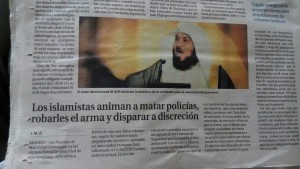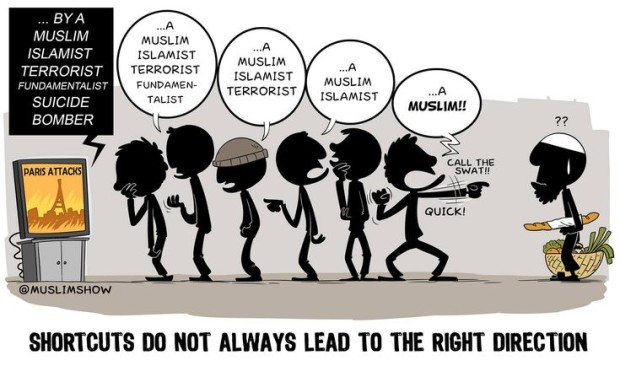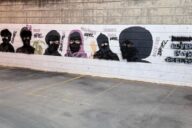Fourth chapter of the “Islamophobia in Spain. National Report 2015”, published by the Islamic Culture Foundation, which analyzes the treatment Islam receives by the Spanish media. (Click here to read the previous chapters)
Islamophobia in the media has, sadly, been denounced as one of the most common ways of Islamophobia (Desrues, 2008: 5), especially dramatic for the important influence the media has over the population’s opinion‑forming process. A poll carried out by professor Thierry Desrues in 2008 showed that the majority of Muslims felt that the view the non-Muslim population had of them was negative, simplistic or fake (Desrues, 2008: 3); the media plays an important role when contributing to this phenomenon.
The reductionist message spread by the media highly contributes to the transmission of a negative image of Muslims
In this sense, Corral García identified a direct link between the opinions expressed in digital newspapers when regarding Muslims and the opinions held by its readers, by analyzing the comments written by newspapers’ consumers at the end of each article. Thus concluding that the Islamophobic views defended in newspaper generated hate speeches among the readers (Corral García, 2014: 16).
Desrues identified four different critics Muslims in Spain expressed against the media: the generation of value judgements without truly understanding Islam, the confusion surrounding Islam and Muslims, the identification of Islam with cultural behaviors, and the fact that their faith is used as an explanation of people’s acts or opinions (Desrues, 2008: 3). Likewise, he identified four elements the Spanish population associates to Islam that contribute to worsen its image: the use of corporal punishments, sexism, the presence of despotic governments, and terrorism and religious fanaticism (Desrues, 2008: 3).

“The Moroccan citizen arrested in #Atocha after threatening with blowing himself up didn’t carry any explosives”. Example of a wrong use of the information by the media, unnecessarily mentioning the arrested man’s nationality for sensationalist purposes.
In this context, the press has played a singular role in 2015 due to the global importance of the Islam State and to the repercussions the Charlie Hebdo attack has had in Europe. This has led to an increase in the use of elements such as jihad, burqa, Islamist, or to the use of stereotyped images such as mosques, women wearing hijab, images of prayers, etc. Among the examples, we can mention the justification of Mr. Fernández Díaz, Spanish Ministry of Internal Affairs, of the support of Muslims to the independence of Catalonia because “they were promised the heaven if they did”, headlines such as “from Madrid’s mosque to the ranks of jihadism”, the highlight by the press of the people’s nationality whenever they are Arabs or Muslims, or the call made by some journalists to impose the Western European model to the Muslim society living in Spain.

“Islamists encourage the killing of policemen, in order to steal their weapons and to fire at everyone on sight”
In addition, as López Bargados and Ángeles Ramírez point out, the main expressions of Islamophobia fall on Muslim women (López Bargados and Ángeles Ramírez, 2015: 25). Not only to refer to the use of the hijab or the burqa, but also to victimize them when talking about terrorism. Thus they are “victims”, “seduced”, “convinced”, “sexual slaves” or “concubines living in a harem”, thus denying them any capacity for action. Examples of this can be found in daily newspapers, with headlines like “Jihadist girls want to go home ‘disappointed’ with ISIL”, “Young Western women crazy about a jihadist” or statements such as “she let herself be seduced by the words and images of bearded men who promised her a life in the ‘brothers’ heaven”.
Bibliography
Alberto López Bargados and Ángeles Ramírez Fernández, “Un decálogo a contracorriente contra la islamofobia”, Viento Sur, 138, February, (2015): 19-26.
Alfonso Corral García, “Islamofobia en la prensa digital? Análisis de los comentarios en “La inocencia de los musulmanes”, in Periodismo y publicidad digital en España: análisis empírico, Universidad, investigación y periodismo digital. XV Congreso de Periodismo Digital de Huesca, ed. Fernando Sabés Turmo (Huesca: Asociación de la prensa de Aragón, 2014), 140-152, accessed December 18, 2015 http://decimoquinto.congresoperiodismo.com/pdf/libro2014.pdf.
Graciela Padilla Castillo and Pilar Sánchez González, “La importancia del tratamiento de la religión en medios de comunicación. El caso del Islam en España”, Estudios sobre el Mensaje Periodístico. Vol. 19, Núm. especial marzo (2013): 449-457.
Thierry Desrues, “Percepciones del Islam y de los musulmanes en los Medios de comunicación en España”, (paper presented at the conference “El diálogo intercultural: un reto para las creencias y las convicciones”, European Comission, Brussels, November 11, 2008), accessed December 15, 2015, http://digital.csic.es/bitstream/10261/30745/1/Thierry%20Desrues%20El%20dialogo%20intercultural.%20Un%20reto%20para%20las%20creencias%20y%20las%20convicciones.pdf.















No Comments